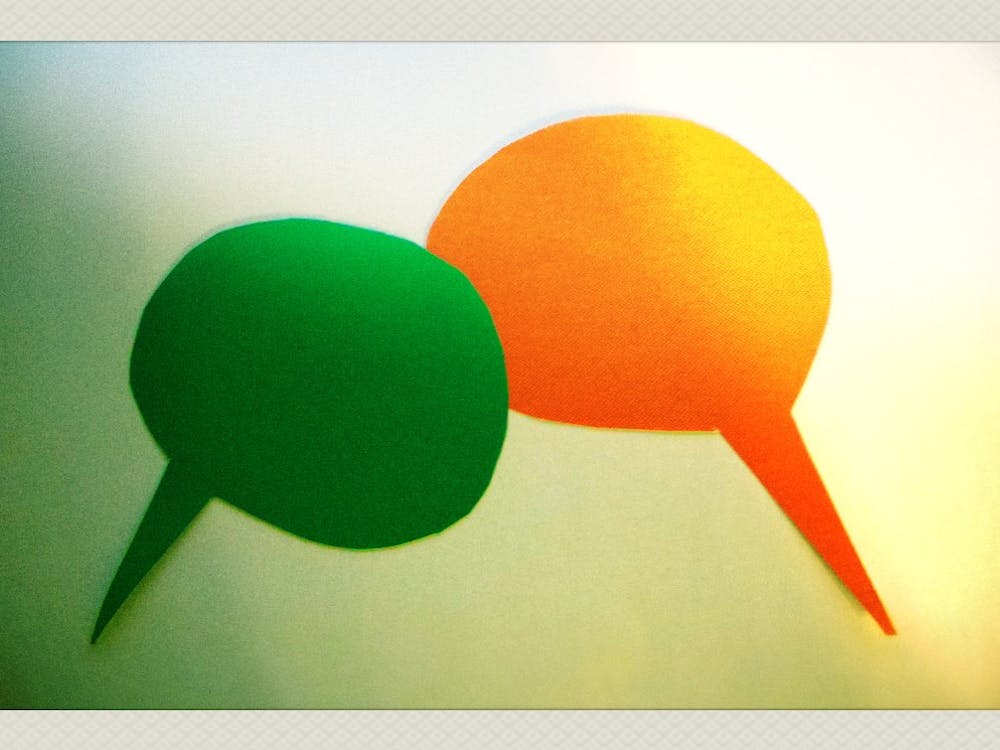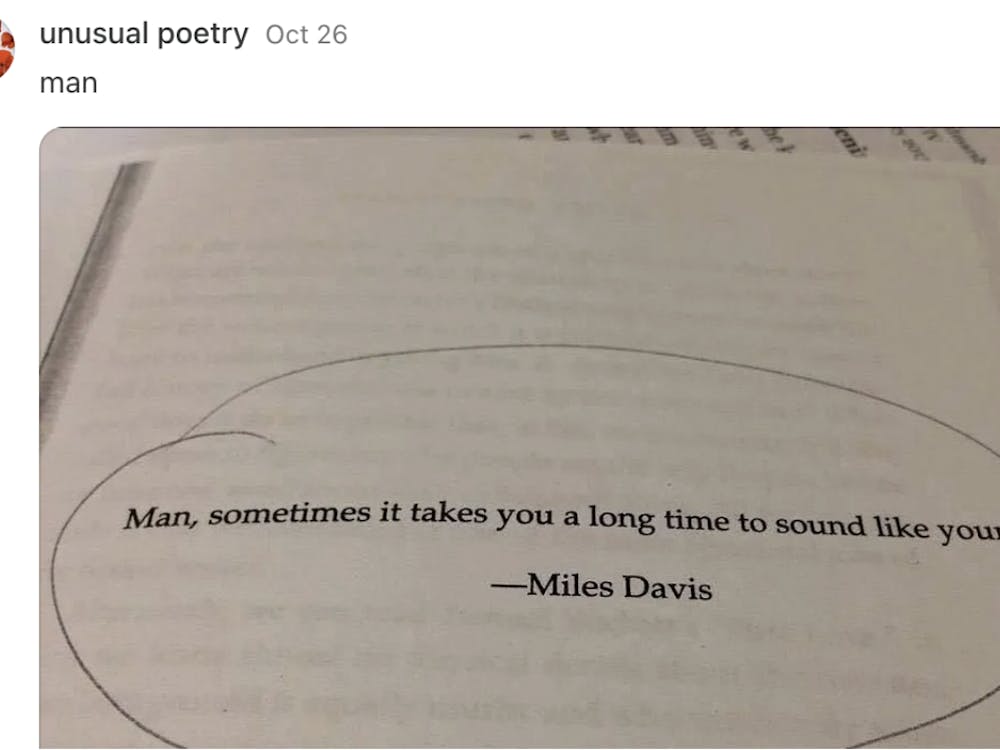Factual inaccuracies and straw men too often go unchallenged in the campus abortion debate. In its Oct. 9 editorial endorsing abortion on demand, the News-Letter Editorial Board promoted a number of myths about abortion.
Many of us are rightly repulsed at the idea of the strong dominating the weak, as our University’s commitment to “non-discrimination” suggests. Yet remarkably, our laws and culture say that if a human being is too early in its stage of development or too dependent on its mother for shelter and nutrition, then violent acts of dismemberment, exclusion and demonization become acceptable, even laudable.
The fundamental question in the abortion debate is this: Who counts as one of us? Some who argue that abortion is a fundamental right deny the science of human embryology. Others concede the humanity of the child in the womb, arguing that it’s still okay to kill him or her.
The “right to choose” is a catchy slogan, but it’s misleading. The right to choose abortion isn’t like choosing chocolate or vanilla ice cream; it’s choosing who lives and who dies. Dressing up abortion with other loaded terms like “women’s health”, “bodily rights” and “safety” is meaningless if we do not first establish what the preborn fetus is.
Science has indisputably established the fact that, as Dr. Keith Moore writes in The Developing Human: Clinically Oriented Embryology, 7th edition, “Human development begins at fertilization. This highly specialized, totipotent cell marked the beginning of each of us as a unique individual." A preborn child is not a potential person, but a person with potential — a whole, distinct, living human being. The difference between you as an embryo or fetus and you today as a college student is only a function of time and nutrition.
Since it is a scientific fact that abortion kills a unique and genetically unrepeatable human being, the question cannot be “about a woman’s control over her own body,” as the News-Letter board argues. Your preborn child’s body growing inside your body is not your body. Otherwise, a mother pregnant with a baby boy could be said to have two hearts, four eyes, eight limbs and a penis.
The News-Letter suggests that perhaps human rights begin when the preborn child can survive outside the womb. But after a trip through the birth canal, a newborn baby is just as dependent on its mother for food and shelter to survive. The age of viability, moreover, continues to change as our technology improves each year. By implication, a 20-week-old fetus in 21st century America is a legal person, but a 20-week-old fetus in 19th century America was not, since the technology capable of helping such a being survive outside the womb has not always existed. One’s level of development doesn’t determine their humanity or value. If this were the case, a six-month-old would be human or more valuable than a newborn, and a two-year-old would have more value than a one-year-old.
The Editorial Board further claims that aborting “unwanted children” can be “in the best interest of both the child and the mother.” But it is never in a very young human’s best interest to kill him or her, nor is it reasonable to believe that it is just to kill an innocent child for the sake of preventing later abuse, poverty or other social ills. The violent dismemberment of a living and growing child in the womb is the ultimate form of child abuse.
The News-Letter also argues that we need abortion on demand to maintain the legality of killing preborn children conceived in the horrible circumstances of rape or incest. But why should we punish the innocent preborn child for the crimes of the father? Abortion cannot undo the trauma of rape; it compounds the injustice of rape with the injustice of killing an innocent life. By the same token, why couldn’t a mother kill her two-year-old child conceived in rape if she says that the child reminds her of the rapist father?
Abortion’s legality does not make it moral or safe; it is never safe for the babies it destroys. Abortion poses serious health risks to women as well. Over 410 women have been killed in clinical abortions, on average 11.42 every year, since Roe v. Wade made abortion “safe and legal” (LifeSiteNews, CDC). Horrifying abortion clinics like those of Dr. Kermit Gosnell, who butchered infants born alive and killed women in botched abortions, are not freak outliers but the norm in too many places. Only a year and a half ago, 38-year-old Maria Santiago died after an abortion in a shoddy Baltimore clinic with a broken defibrillator right in our backyard, a block from the Homewood campus. Legal abortion only moved the “back alley” to Main Street. Women who have died from or been harmed by abortion deserve to have their stories heard, too.
The notion that women must kill their own offspring in order to be successful or empowered is profoundly insulting. Women facing crisis pregnancies deserve better than abortion. They deserve the real support, compassion and resources that over 2,500 life-affirming pregnancy centers, like Pregnancy Center North here in Baltimore, work hard every day to provide for free. The supposed need for abortion is based on the lie that women aren’t strong enough to choose adoption or motherhood for their child over killing him or her. The choice between your child’s life and your life dreams is a false one.
The pro-life cause goes to the very heart of Johns Hopkins University’s mission as a medical research university. At a 1909 meeting of the Medical and Chirurgical Faculty in Baltimore, Dr. Howard Atwood Kelly, co-founder of the Johns Hopkins Hospital and father of modern gynecology, proposed these resolutions, which were accepted unanimously with applause: "Resolved, that we today... consider the act [of abortion] to be equivalent to murder in the first degree when not imperative to save the prospective mother from death or extreme illness... Furthermore, be it resolved... to take all possible means to stamp out this vile practice and to assist in bringing every abortionist to the bar of public justice. Resolved, that we request all our members not only to refrain from any and every act by any possibility to be construed as complicity, but to abandon a merely negative position and sedulously strive to quicken the public conscience until the people themselves take an aggressive attitude toward infant murder in all its forms."
Dr. Kelly is right — at the end of the day, there is no neutral position on abortion. Either you believe every human being has innate value or you believe that the strong should be able to violently deprive the weak of their lives. There is no middle ground of “live and let live” since abortion is a case of “live and let die.” It’s wrong and discriminatory to suggest that some people are more deserving of the fundamental right to life than others. As a nation committed to civil rights and as a university devoted to the preservation of human life, how can we look upon the pleading African slave on the famous abolitionist seal and in our own time fail to hear the silent screams of the preborn victims of abortion: “Am I not a man and a brother?"
Andrew Guernsey is a junior political science and classics major, and Jessica Janneck is junior philosophy major.
Correction: The News-Letter incorrectly headlined the op-ed “Abortion on demand is institutionalized mass murder.” This headline misrepresented the subject and tone of the piece and has been changed for the online version. The News-Letter apologizes for this error.




